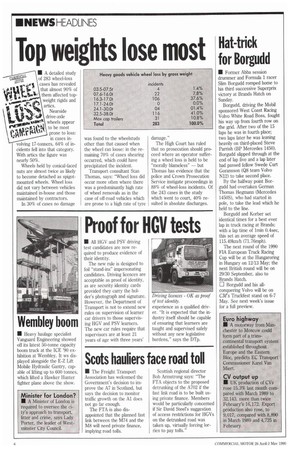• A detailed study of 283 wheel-loss cases has revealed
Page 8

If you've noticed an error in this article please click here to report it so we can fix it.
that almost 90% of them affected top weight rigids and artics.
Nearside drive-axle wheels appear to be most prone to loss: in cases involving 17-tormers, 64% of incidents fell into that category. With artics the figure was nearly 50%.
Wheels held by conical-faced nuts are almost twice as likely to become detached as spigotmounted wheels. Wheel loss did not vary between vehicles maintained in-house and those maintained by contractors.
In 30% of cases no damage was found to the wheelstuds other than that caused when the wheel ran loose: in the remaining 70% of cases shearing occurred, which could have precipitated the incident.
Transport consultant Stan Thomas, says: "Wheel loss did occur more often where there was a predominantly high rate of wheel removals as in the case of off-road vehicles which are prone to a high rate of tyre damage."
The High Court has ruled that no prosecution should proceed where an operator suffering a wheel loss is held to be "morally blameless" — but Thomas has evidence that the police and Crown Prosecution Service instigate proceedings in 88% of wheel-loss incidents. Of the 243 cases in the study which went to court, 40% resulted in absolute discharges.
























































































































